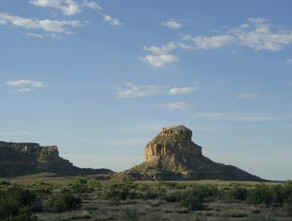|
|
||
|
|
Chaco Canyon, NM June 2001 Dear Jake & Amelia, As we drove up Gallo Wash, we could see Fajada Butte standing alone. The Canyon stretches far off to the north west, a narrow space defined by cliffs of tan and terra cotta stone cracked into great chunks of rock. Beneath the cliffs sit a number of wonderful ruins with complex and beautiful plans. The masonry work is sublime. Thick walls of carefully cut sandstone supported multi-story constructions. The best known of these great houses is Pueblo Bonito, the largest with over 600 rooms and 40 kivas. Bonito was built in four planned phases. The plan is a beautiful composition of round and square rooms held within a D shape. A long straight wall faces the canyon. The rooms bulge towards the cliffs close behind. Our first reaction was to the beauty of the canyon and the ruins. The next was to question what they represent and why they are here. We are not alone. Archeologists have wondered that for years. Recently several have developed the theory that Chaco Canyon, and specifically Pueblo Bonito, was the center of a civilization that spread throughout the San Juan Basin, the area known today as the American Southwest. Chaco was the primary collection, storage and distribution point, an ancient exchange market, for crops and goods from farming villages and outlying great houses. Their culture flourished for the 300 years between 850 and 1150 AD. Over 400 miles of ancient roads have been found extending in all directions from the great houses in Chaco Canyon. They connect to other great houses within the San Juan Basin. Trade routes extended even further. Ideas and goods such as pottery, raw turquoise, seashells from the west coast, copper bells, macaws and parrots from Mexico were traded. These ancestral puebloan peoples were also sophisticated observes of the sky. Petroglyphs as well as building elements were used as markers for the solstices, the equinoxes and even the 18 year cycle of the moon. We visited the ruins and walked through their rooms. We hiked trails down into the canyon and up onto the mesa top. We watched the sun turn the cliffs golden before it set. We saw the sunrise move a slot of light into a niche at Casa Rinconado on the morning of the summer solstice. We stayed long enough to know several of the rangers and volunteers by name. We were sorry to leave this beautiful remote place, its mysteries and our Park friends. Nancy & Peter
|
|
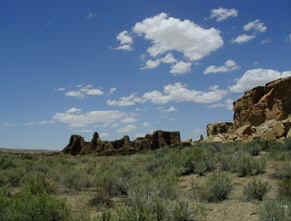 |
||
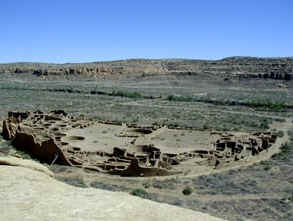 |
||
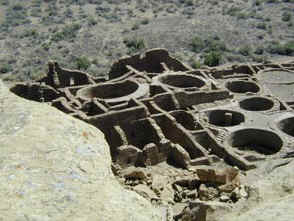 |
||
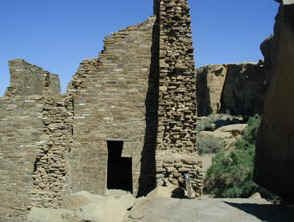 |
||
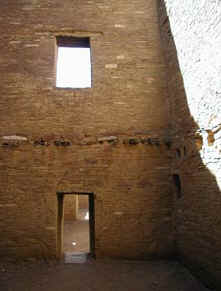 |
||
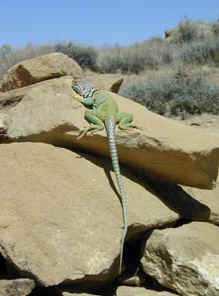 |
||
|
Home Across America Southwest Previous Postcard Next Postcard Nancy Fulton Art All Rights Reserved © 2001 Nancy Fulton & Peter Miner |
||

